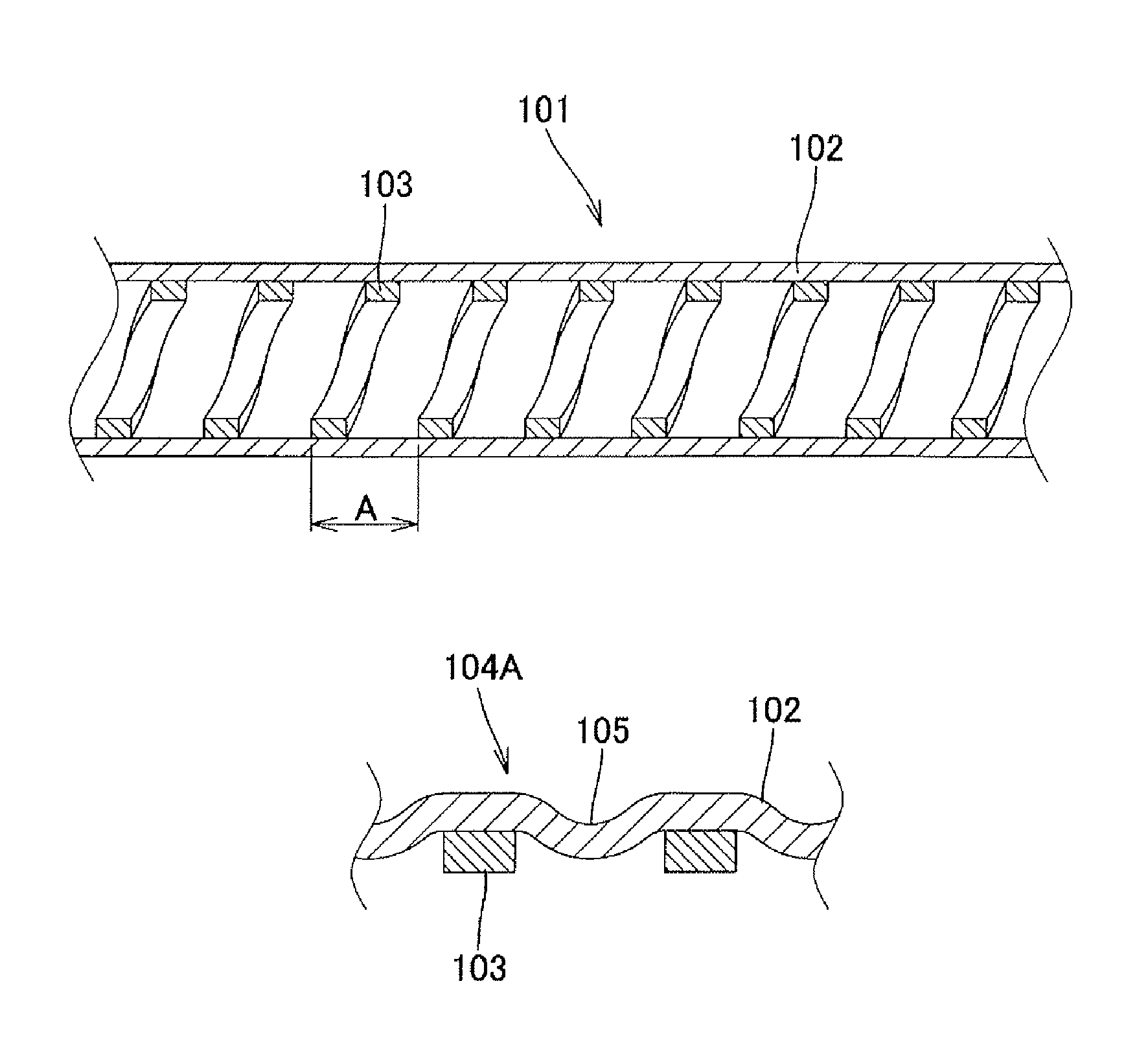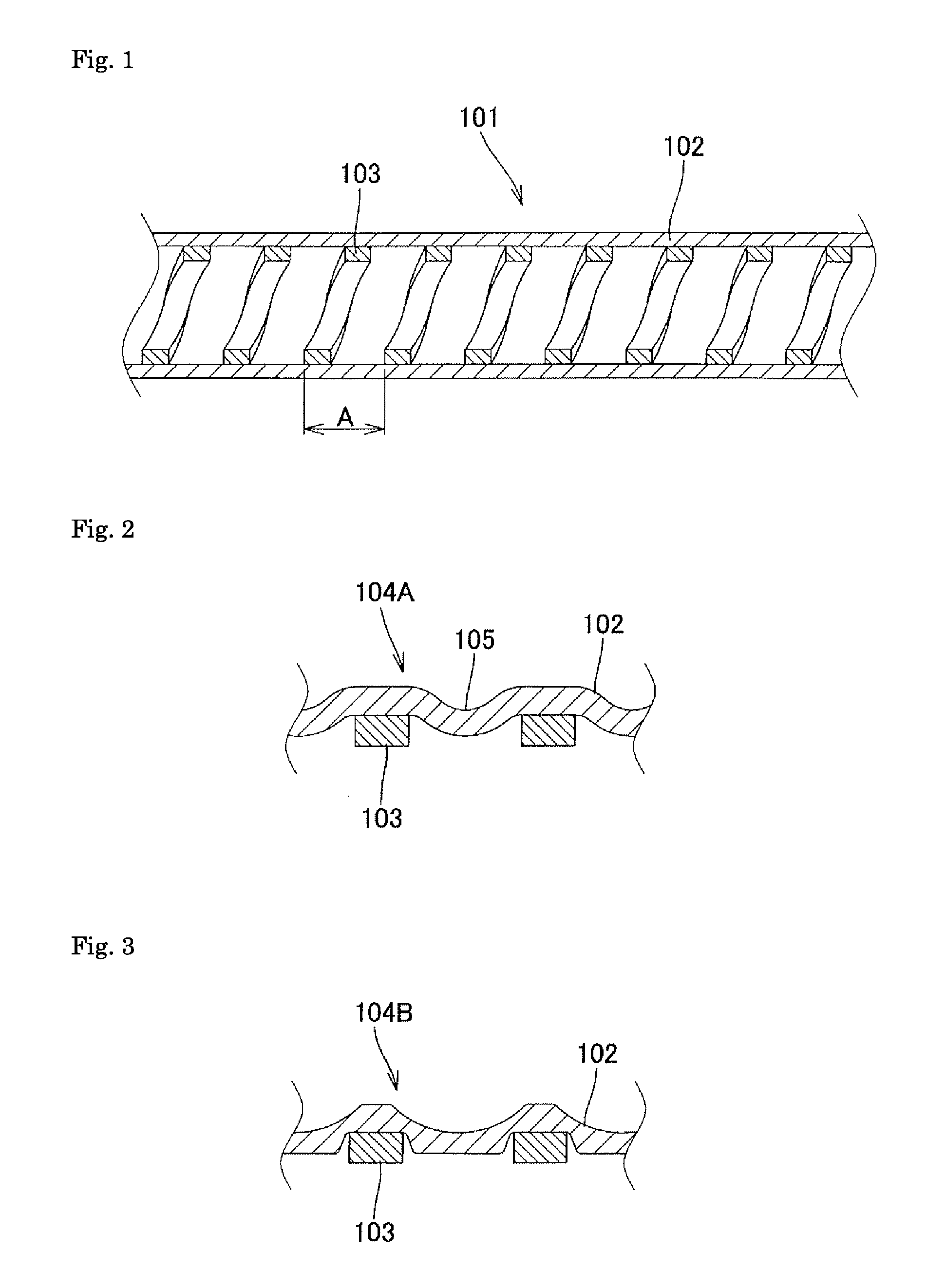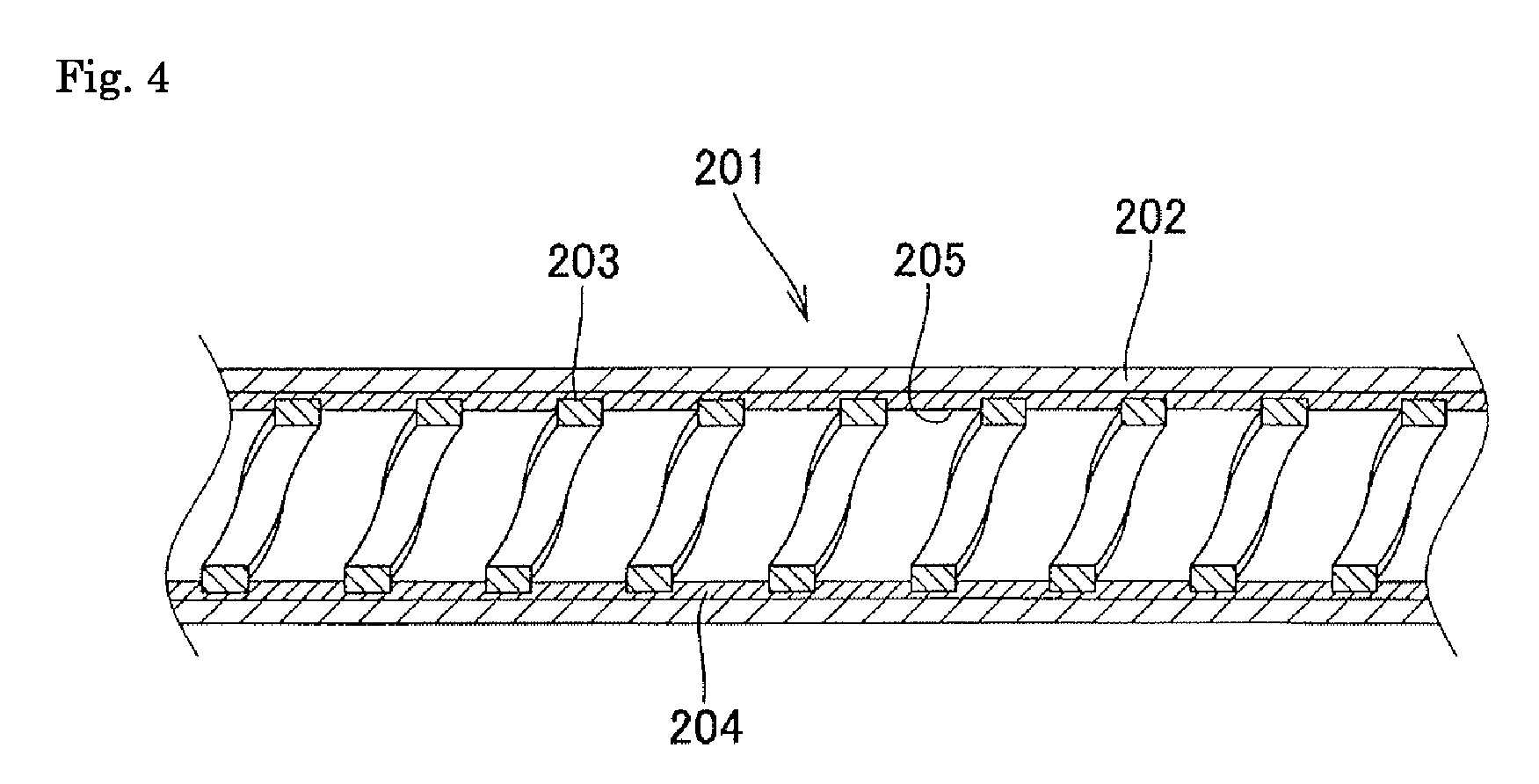Method for manufacturing a medical tube
a manufacturing method and flexible technology, applied in the direction of tubular articles, catheters, other domestic objects, etc., can solve the problems of difficult to ensure, inferior tensile strength of thin-walled tubes, kink resistance of thin-walled tubes, etc., and achieve excellent kink resistance and tensile strength. , the effect of simple manufacturing method
- Summary
- Abstract
- Description
- Claims
- Application Information
AI Technical Summary
Benefits of technology
Problems solved by technology
Method used
Image
Examples
example 1
[0125]A coil layer used was a tightly wound coil having an inner diameter of 1.00 mm and a length of 300 mm and made of a stainless steel flat wire (a thickness of 0.10 mm, a width of 0.20 mm). An outer layer tube used was a polyurethane elastomer (a Shore D hardness of 68 D, a melting point of 182° C.) tube that had an inner diameter of 1.25 mm and an outer diameter of 1.39 mm and was prepared using an extruder through extrusion molding by common pulling down while injecting air into an inner cavity.
[0126]Into the inner cavity of the prepared coil, a stainless steel core material having a diameter of 0.98 mm and a length of 400 mm was inserted, and the whole was inserted into the outer layer tube. The whole in this state was heated in an oven adjusted at 130° C. for 2 minutes. After taking out from the oven, the stainless steel core material was pulled out, thereby affording a medical tube having an inner diameter of 1.00 mm, an outer diameter of 1.35 mm, and a length of 300 mm.
example 2
[0127]A coil layer used was a pitch wound coil having an inner diameter of 1.00 mm, a clearance between wires of 0.05 mm (a pitch of 0.15 mm), and a length of 300 mm and made of a stainless steel flat wire (a thickness of 0.02 mm, a width 0.10 mm). An outer layer tube and an intermediate layer used were a two-layer tube that had an inner diameter of 1.08 mm, an outer diameter of 1.20 mm, and a length of 300 mm, included an outer layer (outer layer tube) having a thickness of 0.05 mm and made of a polyurethane elastomer (a Shore D hardness of 68 D, a melting point of 182° C.) and an inner layer (intermediate layer) having a thickness of 0.01 mm and made of a polyurethane elastomer (a Shore A hardness of 85 A, a melting point of 163° C.), and was prepared using an extruder through extrusion molding of two-layer tube by common pulling down while injecting air into an inner cavity.
[0128]Into the inner cavity of the prepared coil, a stainless steel core material having a diameter of 0.98...
example 3
[0129]A coil layer was the same as in Example 1. An outer layer tube used was a polyamide elastomer (a Shore D hardness of 72 D, a melting point of 176° C., a heat deformation temperature of 106° C.) tube that had an inner diameter of 1.25 mm and an outer diameter of 1.39 mm and was prepared using an extruder through extrusion molding by common pulling down while injecting air into an inner cavity.
[0130]Into the inner cavity of the prepared coil, a stainless steel core material having a diameter of 0.98 mm and a length of 400 mm was inserted, and the whole was inserted into the outer layer tube. The whole in this state was heated in an oven adjusted at 130° C. for 2 minutes. After taking out from the oven, the stainless steel core material was pulled out, thereby affording a medical tube having an inner diameter of 1.00 mm, an outer diameter of 1.35 mm, and a length of 300 mm.
PUM
| Property | Measurement | Unit |
|---|---|---|
| inner diameter shrinkage ratio | aaaaa | aaaaa |
| inner diameter shrinkage ratio | aaaaa | aaaaa |
| shrinkage ratio | aaaaa | aaaaa |
Abstract
Description
Claims
Application Information
 Login to View More
Login to View More - R&D
- Intellectual Property
- Life Sciences
- Materials
- Tech Scout
- Unparalleled Data Quality
- Higher Quality Content
- 60% Fewer Hallucinations
Browse by: Latest US Patents, China's latest patents, Technical Efficacy Thesaurus, Application Domain, Technology Topic, Popular Technical Reports.
© 2025 PatSnap. All rights reserved.Legal|Privacy policy|Modern Slavery Act Transparency Statement|Sitemap|About US| Contact US: help@patsnap.com



